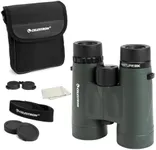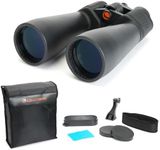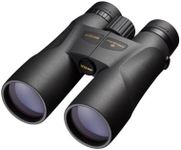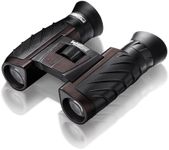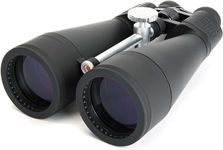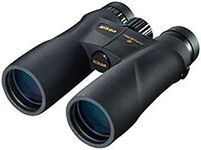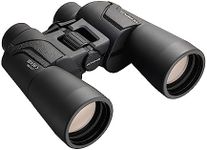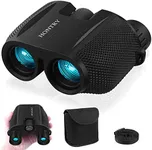Buying Guide for the Best Safari Binoculars
Choosing the right safari binoculars can greatly enhance your wildlife viewing experience. The right pair will allow you to see animals clearly from a distance, making your safari more enjoyable and memorable. When selecting binoculars, consider factors such as magnification, lens diameter, field of view, and weight. These specifications will determine how well the binoculars perform in different environments and how comfortable they are to use over extended periods.MagnificationMagnification refers to how much closer the binoculars can make an object appear. For safari binoculars, a magnification of 8x to 10x is generally ideal. This range provides a good balance between bringing distant animals closer and maintaining a stable image. Higher magnification can make the image shaky and harder to keep steady without a tripod, which is not practical on a safari. Consider your ability to hold binoculars steady and the typical distance you expect to view wildlife from when choosing the right magnification.
Objective Lens DiameterThe objective lens diameter is the size of the front lenses, measured in millimeters. This spec is crucial because it determines how much light the binoculars can gather, affecting image brightness and clarity. For safari use, a lens diameter of 30mm to 42mm is recommended. This range offers a good compromise between light-gathering ability and portability. Larger lenses provide brighter images, especially in low light conditions, but they also make the binoculars heavier. Consider the typical lighting conditions of your safari and your comfort with carrying heavier equipment.
Field of ViewField of view indicates the width of the area you can see through the binoculars, usually measured in feet at 1000 yards. A wider field of view is beneficial for tracking moving animals and scanning large areas. For safari binoculars, a field of view of at least 300 feet at 1000 yards is desirable. This allows you to easily follow animals as they move and provides a more immersive viewing experience. Think about how much of the landscape you want to see at once and how important it is for you to track fast-moving wildlife.
Weight and SizeThe weight and size of binoculars affect how comfortable they are to carry and use for extended periods. On a safari, you may be holding your binoculars for long stretches, so lighter models are generally preferable. Compact binoculars are easier to pack and carry, but they may compromise on image quality and brightness. Consider your physical comfort and the practicality of carrying heavier equipment when choosing the right weight and size for your needs.
Durability and Weather ResistanceDurability and weather resistance are important for safari binoculars, as they will be exposed to various environmental conditions. Look for binoculars that are waterproof and fog-proof to ensure they can withstand rain, humidity, and temperature changes. Rubber armor can provide additional protection against bumps and drops. Consider the typical weather conditions of your safari destination and how much rough handling your binoculars might endure when selecting for durability.

